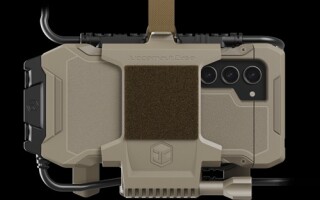DLA's claims about DNA marking not correct
StoryMarch 07, 2014
In this Letter to the Editor, Lee Mathiesen of Lansdale Semiconductor comments on John McHale's column from December 2013 - "DNA marking for counterfeit parts: Problem solver or money pit?"
John,
I have read the column you wrote in December: “DNA marking for counterfeit parts: Problem solver or money pit?” I would like to respond to Ms. McCaskill’s comments made on behalf of the [Defense Logistics Agency] DLA.
DLA claims that DNA marking will increase competition and decrease cost. I believe the actual record shows that this is not the case. In 2012, prior to the DLA mandate to mark with DNA, DLA procured approximately $12 million of 5962 microcircuits from just over 200 individual vendors. By their own admission the number of vendors is now 28. How does this increase competition?
A statistical anomaly is that although prior to the DLA mandate for DNA marking, DLA procured 5962 products from over 200 vendors, over 90 percent of those procurements were from the authorized distributors or [Original Component Manufacturers] OCMs of the products. Some of the largest sellers were Arrow, Avnet, Rochester Electronics, and Lansdale Semiconductor. Since the mandate has been fully implemented that statistic has changed – more than 90 percent of the 5962 products are now being procured from brokers. The authorized channels previously used (Arrow, Avnet, Rochester and Lansdale) have combined sales of zero with DNA marking.
The authorized distributors, Arrow and Avnet, really haven’t been hurt too much by the mandate for two reasons: 1) DLA is really a small buyer in the overall military market at less than $12 million per year, and 2) They are still selling the OCM product. Instead of selling to DLA direct, they’re just selling to the broker market, which is marking the parts with DNA and then selling them to DLA. All of these sales to the broker market are [Non-Cancelable/Non-Returnable] NCNR, meaning that there is no manufacturer support of the product, including no manufacturer’s warranty, once it is obtained by the brokers.
So who is really supplying the DLA? The vast majority of procurements are from the 14 brokers that DLA calls their trusted suppliers (QSLD = Qualified Suppliers List Distributors). These companies procure product, often from the authorized distributors. They then alter the product by marking it with DNA, perhaps followed by a marking permanence test on the lot, and then they sell the modified parts to DLA. Obviously they are not in this for the excitement of selling parts – they are for-profit companies.
So when you understand that the minimum lot charge to the broker for marking with DNA is $500 per lot, and that the average buy quantity from DLA is under 20 pieces, and that these brokers normally obtain over a 25 percent profit margin on their sales, you understand why the part that would cost $10 from the authorized distributor without DNA marking now costs well over $40 with DNA marking. The question is for what? The broker does not mark parts with the authentic manufacturer’s DNA; they mark with their own broker DNA. So is this a mark of product authenticity or is it just a method for DLA to track their inventory? These charges are on top of the $49,000 paid by each broker to the DNA manufacturer each and every year to license the ink. Currently, DLA is reimbursing this cost to 27 different suppliers to the tune of over $1.32 million in just over 12 months, before ever buying one single part from them. I don’t understand the accounting methodology being used at DLA.
Because supporting the DLA is important to us, Lansdale pursued obtaining a license to put DNA marking on our product to try to meet the DLA mandate. We were working on a contract with the DNA manufacturer and had even received contracts from DLA requiring the DNA mark. Then we received a call from several directors at DLA Land and Maritime [formerly Defense Supply Center Columbus (DSCC)]. The conversation in a nutshell was that these directors believed that the price increase that Lansdale was quoting for product marked with DNA was too high. Lansdale explained that the price was directly proportional to our direct cost for marking and re-qualifying the product per paragraph A3.6.9 of MIL-PRF-38535. One of the directors on the call stated that if we (Lansdale) would not lower our price, he would label the part number unprocurable and have the part number cancelled. In an effort to not make enemies of these directors, we ended the call by stating that we would stop quoting product with DNA marking and would cancel the contracts we had already obtained.
Of the 21 QML manufacturers at the JEDEC JC-13 meetings only one (Sarnoff) is currently marking product with DNA, and the reason that they are doing so is because they are a captive line (the GEM program) funded directly from DLA. As a matter of fact, during a straw poll of QML manufacturers, 13 said they would not mark with DNA. Both the Semiconductor Industry Association (SIA) and JEDEC have come out publicly against the DNA mandate. Both have written letters to the DLA director and the Under Secretary of Defense for AT&L stating that the implementation is flawed.
The JEDEC JC-13 committee has also written a letter to the DLA director stating that the manufacturers of QML product do not agree that only Marking Permanence need be tested to re-qualify the product after the DNA marking and ink cure. The manufacturers believe the requalification testing outlined in paragraph A3.6.9 of MIL-PRF-38535 is more appropriate considering the additional handling and temperature exposure of the product.
DLA touts that nine OCM manufacturers as well as three OEMs have adopted DNA. Who are these companies? What products do they sell? Again, of the 21 QML manufactures at the JEDEC JC-13 committee meetings only one is signed up to do DNA marking. This leads us to another issue. There have been three documented instances where a QSLD broker has put DNA marking on a suspect counterfeit product. One of these instances resulted in a GIDEP Agency Action Notice from DLA. In all three of these instances, the suspect product was returned to the seller in violation of NDAA 2012 requirements. Most suppliers agree that the DNA is probably uncopyable, but if it is being misused and put on suspect counterfeit product what value does it add?
In parting I would like to state that the JEDEC JC-13 DNA marking task group has been cancelled. Both JEDEC and the SIA have written letters to both the Director of DLA and the Under Secretary of Defense for AT&L stating that the DNA marking mandated by DLA is not an appropriate fix for the problem of counterfeit product entering the supply chain. There are several industry standards written about the avoidance, detection, mitigation, and disposition of counterfeit product, which DLA is completely ignoring.
Like I have said many times, not buying counterfeit product is simple: don’t buy them. If you procure product from the OCM or their authorized distribution channel the odds of obtaining a counterfeit fall nearly to zero. If you buy from the broker market the odds of buying a counterfeit increase dramatically.
Regards,
Lee Mathiesen, Operations Manager, Lansdale Semiconductor Inc.





